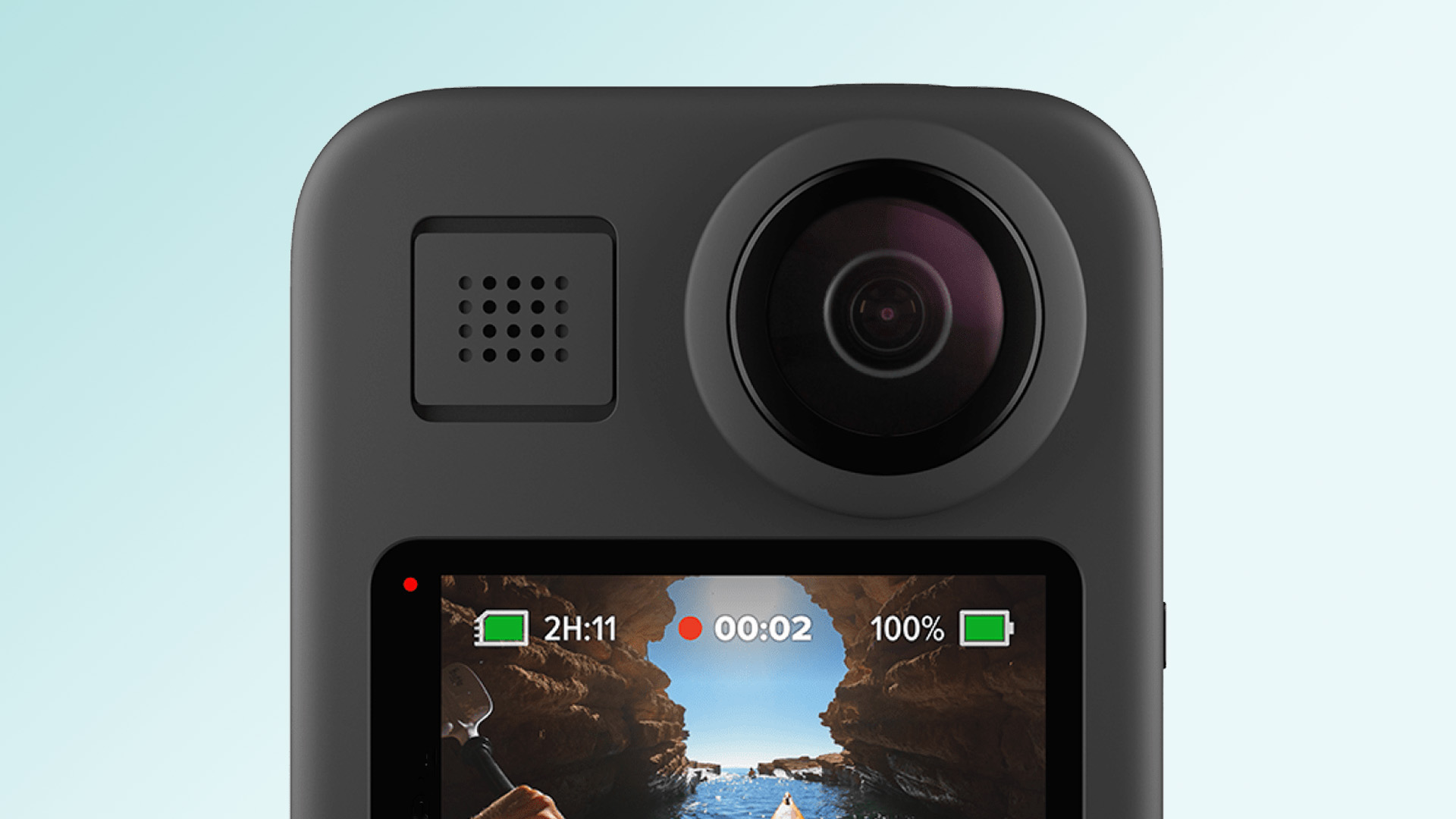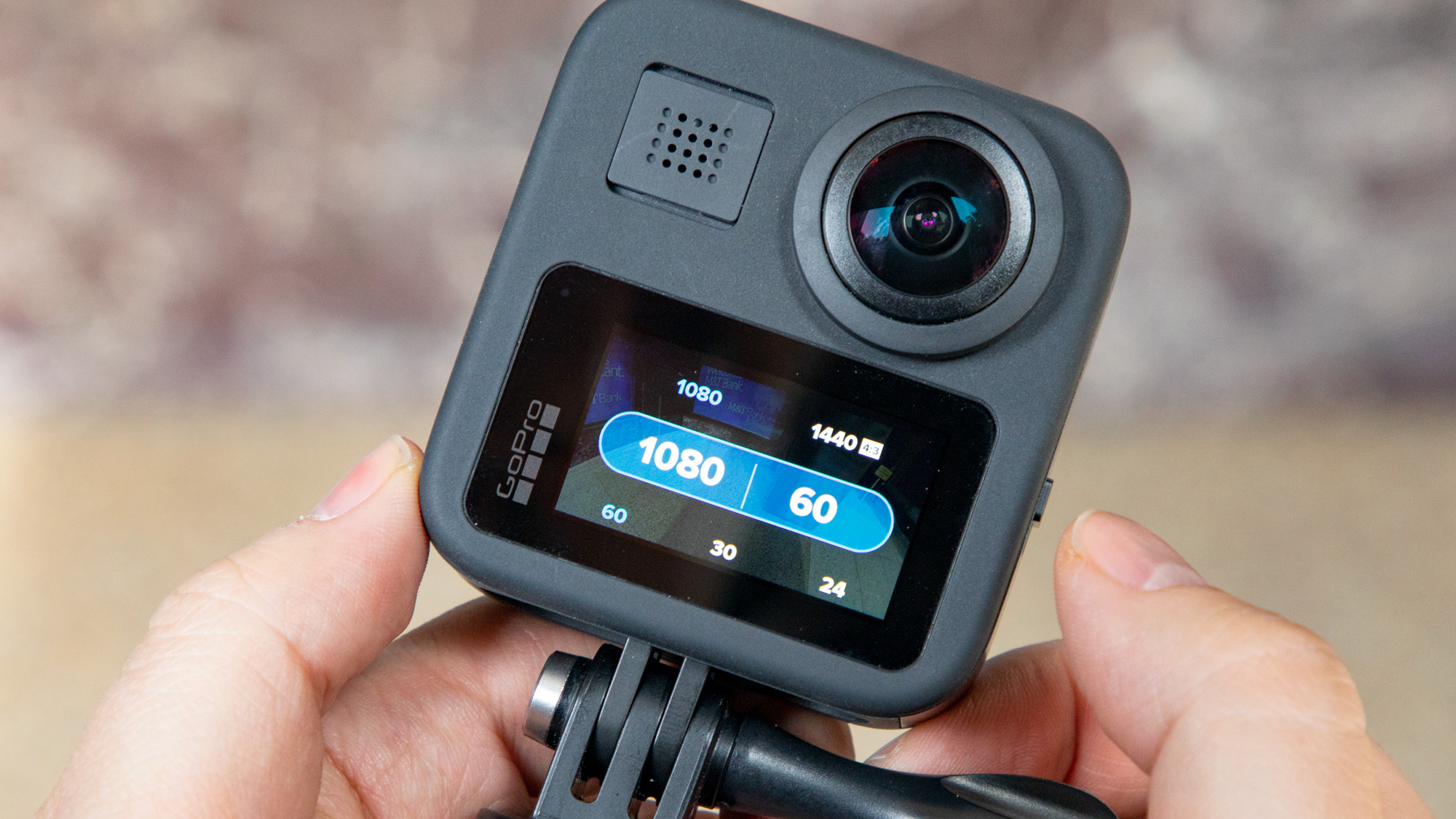GoPro Max 2: What we want to see
The fallen king of 360-degree action cameras needs a new heir

The GoPro Max 2 is overdue – the original GoPro Max is now almost five years old, and while the 360 degree camera holds up fine today, it has been well and truly supplanted by the Insta360 X4: an 8K video beast which is the best 360-degree camera today.
The earliest reports suggested that GoPro would announce the Max 2 in late 2022; however that didn’t happen. Instead, in a quarterly earnings call on May 8, GoPro's CEO Nick Woodman projected the Max 2 will launch in Q4 of 2024.
With its late arrival to the party, the Max 2 has its work cut out to turn heads away from the Insta360 X4. Surprisingly, there's still very little information that has been leaked about the camera thus far, although in July the first supposed image popped up courtesy of serial leaker @Quadro_News, suggesting a massive redesign that could tackle previous overheating issues.
Otherwise, much of this preview is based on what the GoPro Max 2 needs to do to dethrone Insta360, and what we know/imagine to be possible using today’s/ tomorrow’s technology.
Cut to the chase
- What is it? The GoPro Max 2 is a 360-degree pocket camera
- When is it out? Projected Q4 of 2024
- How much will it cost? Likely around $499 / £599 / AU$849
GoPro Max 2: release date
Virtually all GoPro products launch in September or October, though given the protracted Max 2 delays, anything could happen. The latest info we have was from GoPro's quarterly earnings call in May, during which GoPro CEO Nick Woodman addressed the expanding range of GoPro products and said,
"Due to the development process taking longer than expected, the launch of our new entry-level camera will push from Q2 to Q3 in 2024, and our new 360 camera will push to late Q4."
Let's hope that projected timeline turns out to be true and no longer – otherwise we'll be exceeding five years between the Max and Max 2. We're in the second half of 2024 and haven't seen the new entry-level camera yet, so fingers crossed for GoPro's next 360-degree camera.
Sign up for breaking news, reviews, opinion, top tech deals, and more.

GoPro Max 2: a cool design
Overheating is a regular complaint from GoPro fans, especially users of the original Max. That could all change in the Max 2 if leaked pictures are to be believed. Quadro_News shared an image of what is speculated to be the GoPro Max 2, and it's design is radically different to the Max.
In this leaked image, the lens is moved to a central point, the speaker has gone, but the key point to note is the ribs going up and down the device. There’s a good chance these fins are the brand’s “upgraded cooling solution,” according to NotebookCheck.
GoPro Max 2: a fresh approach to editing
A patent registration document provides best available information pointing to possible GoPro Max 2 features. In July 2022, we reported about a 29-page document published by the United States Patent and Trademark Office.
The gist of these patent applications is that GoPro is looking at new software trickery that automatically reframes 360 footage into standard flat videos, based on AI-powered analysis of what's happening in the scenes.
GoPro’s current software could do with a refresh, as it’s starting to be shown up in a few areas by Insta360’s fast and intuitive approach. However, the document also hints at specific features, such as the capability to dynamically zoom in on the faces of people who are speaking.
This could be very handy for quick editing of podcast-like conversations or interviews, with no need for a dual camera setup. Patent filings often amount to nothing but, well, this stuff makes sense.

GoPro Max 2: 4K flat footage
One of the best traits of the GoPro Max is that it’s geared up to be all the action camera you need. The modes that capture flat video, like the footage captured by the GoPro Hero 12 Black, are given just as great prominence as the 360-degree modes.
However, the quality of flat footage from the original Max is just okay, capped as it is at 1080p or 1440p. And that’s 1920 x 1440 pixels for the latter, not the 2560 x 1440 resolution you might hope for. The quality is the same as 1080p; the frame is just taller.
The Max 2 is going to need a flat 4K mode at the least, if not 5.7K or higher, to become a class leader in 2024, not least because the Insta360 X3 and X4 already have such a mode. GoPro will need to use an additional new higher-resolution sensor to make this happen, though.
The original Max has a pair of 12.3MP Sony IMX577 sensors. To capture unassailable 4K footage we need 8.3MP’s worth of pixels after cropping into one of the sensors fairly heavily; we don’t have that at present in the Max, which is why there’s no 4K mode.

GoPro Max 2: dual 1/1.9-inch sensors
What would be the perfect new sensors for the GoPro Max 2? It'll need to be a pair of 27-megapixel 1/1.9-inch sensors, as seen in the Hero 12 Black.
The Sony IMX677 is another option, as seen in the GoPro Hero 9 Black and 10 Black. This 23-megapixel sensor is the same size as those in the original Max's, 1/2.3-inch, but makes a classic action camera view at 4K resolution much more viable.
The sensor used in the Hero 11 Black models is actually a custom version of the IMX677, called the IMX677L. It’s larger, and has an unusual 8:7 aspect ratio. If GoPro gives us a pair of either of these, we’ll likely be happy.
GoPro Max 2: HDR and improved dynamic range
We would need to see a larger sensor in order to facilitate one of the other improvements we’d like to see: increased native dynamic range. This would mean less blowing-out of highlights in skies, particularly when there are lots of big, bright, white fluffy clouds about.
However, even if the GoPro Max 2 ends up using the smaller IMX677 sensor, there is still a way in which GoPro could improve dynamic range – by using HDR video. All current GoPros use basic tone mapping to maximize dynamic range in footage, but the IMX677 sensor also supports DOL-HDR.
This is where two versions of each frame are generated on the fly, at two exposure levels, to avoid ghosting. These can then be merged to preserve highlight detail and bring more information out of the shadows.
We find this particularly useful for 360-degree cameras, because exposure metering is a bit of a nightmare with this style. You can’t move your view to radically affect the auto metering, as everything is always in the camera’s field of view, and it’s not as if action cameras have easy-access manual exposure dials.
The downside of DOL-HDR is that it halves your maximum frame rate. And that brings us to our next point.

GoPro Max 2: slow-mo video and 5.7K at 60fps
The original GoPro Max does not have a particularly high maximum frame rate. 30fps is the max at the top 5.7K resolution, rising to 60fps at 3K.
The GoPro Max 2 is most likely going to offer 60fps at its maximum resolution, which would also allow for 2x slow-mo. But we’d also like to see more pronounced slow-mo too at lower resolution.
120fps at 5.7K? While we can hope for that, 120fps at a step-down resolution somewhere around 3K is perhaps more realistic. 120fps in the ‘flat’ 4K mode we expect from the GoPro Max 2 is also likely.
GoPro Max 2: GP3 processor
What do we need in order to get those kinds of frame rates? A better processor than the one in the original GoPro Max: the latest processor is currently the GoPro GP2. found in models such as the Hero 12 Black. The GoPro Max 2 will need this processor at the very least, but could we see a new GoPro GP3 processor?
The GP2 was introduced in 2021, and GoPro will switch to newer silicon when that chipset has been wrung dry. For a little context, the GP1 was introduced with the GoPro Hero 6 Black in 2017, and was used all the way up until the Hero 10 Black in 2021. We think a new GP3 processor is about due, but there's no guarantee that the Max 2 will feature it even if it materliazes in the latest Hero Black action camera, the supposed Hero 13 Black.

GoPro Max 2: A higher-resolution 8K
All the stuff we’ve mentioned so far will make the Max 2 a tidy upgrade over its predecessor. However, a higher-res 360-degree capture mode is a must if we’re going to see real progress in the quality of consumer-grade 360 cameras in general.
This is not down to a need to see more detail when fully zoomed out, but to make footage look better as you reframe and digitally zoom in. The original Max’s quality breaks down fairly swiftly at 5.7K resolution.
What could we get? We’re going to have to do some rough calculations.
The IMX577 of the first GoPro Max has a horizontal resolution of 4,056 ‘active’ pixels; two cameras therefore means a maximum lateral resolution of 8,112 pixels. The actual horizontal resolution of the Max is 5,760 pixels, 0.71x that combined pixel count.
The active pixel count of the Sony IMX677, a possible Max 2 sensor, is 5,599 pixels. Double that, multiply it by 0.71, and we get 7,951 pixels. This suggests the next Max could offer ‘8K’ capture. Sounds pretty good, right?
As testers of tech, 8K consumer-grade 360-degree video is something we’d like to see above all else in the GoPro Max 2 – and to match the stellar Insta360 X4. However, we’ll have to wait until later this year to see if we actually get it, and to see what other upgrades the Max 2 brings.
You might also like

Andrew is a freelance journalist and has been writing and editing for some of the UK's top tech and lifestyle publications including TrustedReviews, Stuff, T3, TechRadar, Lifehacker and others.
- Timothy ColemanCameras editor